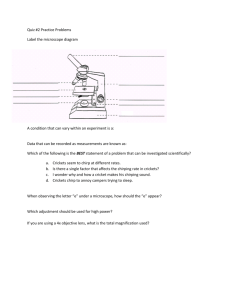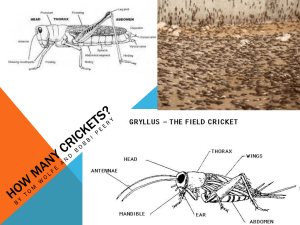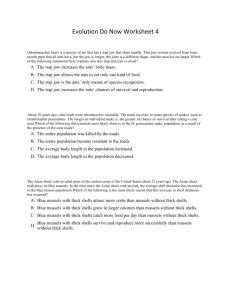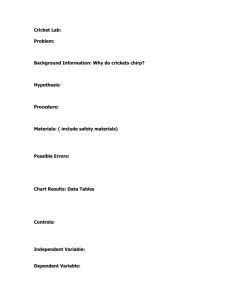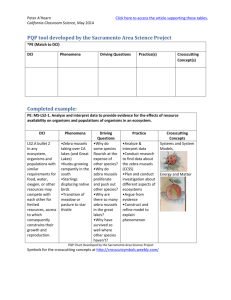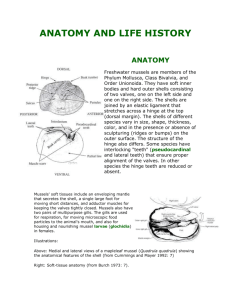MCAS Practice Questions Evolution 2
advertisement
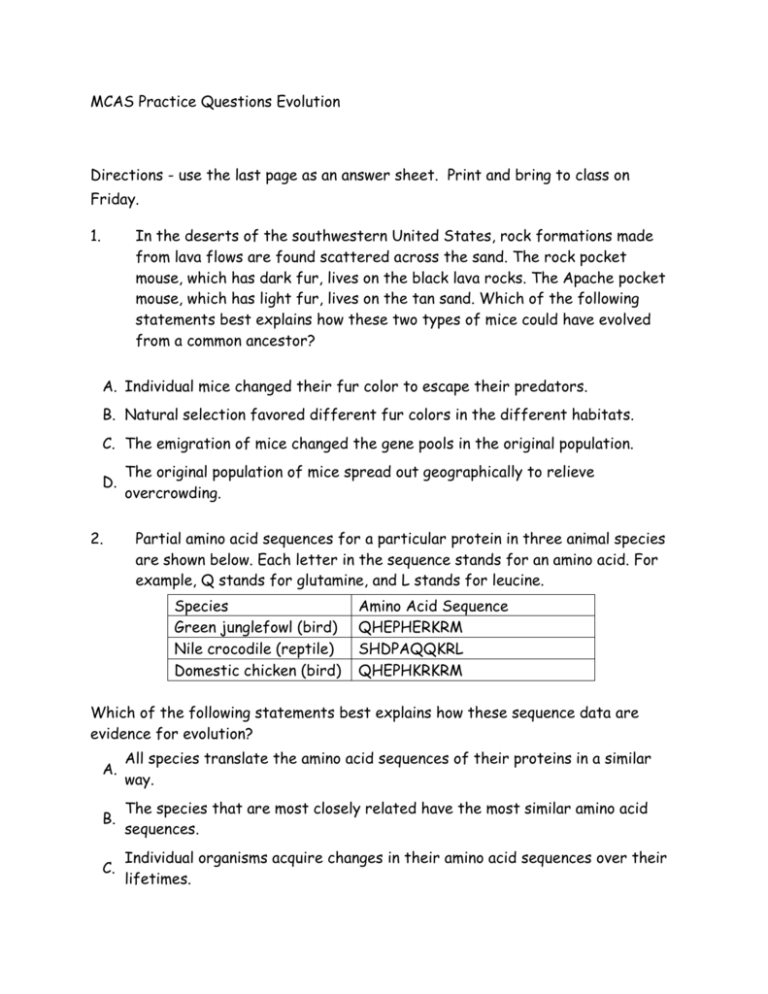
MCAS Practice Questions Evolution Directions - use the last page as an answer sheet. Print and bring to class on Friday. 1. In the deserts of the southwestern United States, rock formations made from lava flows are found scattered across the sand. The rock pocket mouse, which has dark fur, lives on the black lava rocks. The Apache pocket mouse, which has light fur, lives on the tan sand. Which of the following statements best explains how these two types of mice could have evolved from a common ancestor? A. Individual mice changed their fur color to escape their predators. B. Natural selection favored different fur colors in the different habitats. C. The emigration of mice changed the gene pools in the original population. D. 2. The original population of mice spread out geographically to relieve overcrowding. Partial amino acid sequences for a particular protein in three animal species are shown below. Each letter in the sequence stands for an amino acid. For example, Q stands for glutamine, and L stands for leucine. Species Green junglefowl (bird) Nile crocodile (reptile) Domestic chicken (bird) Amino Acid Sequence QHEPHERKRM SHDPAQQKRL QHEPHKRKRM Which of the following statements best explains how these sequence data are evidence for evolution? A. All species translate the amino acid sequences of their proteins in a similar way. B. The species that are most closely related have the most similar amino acid sequences. C. Individual organisms acquire changes in their amino acid sequences over their lifetimes. D. 3. The organisms that evolved at the same time in geologic history have identical amino acid sequences. The bones that make up the forelimbs of monkeys, cats, whales, and birds are similar. Which of the following statements best supports the evolutionary relationship of these animals? A. The animals have different ancestries but have adapted to similar environments. B. The animals share a common ancestry but have adapted to different environments. C. The animals at one time lived in different environments but now share an environment. D. The animals use their forelimbs for identical activities but live in different environments. 4. Antibiotic resistance can vary within a population of bacteria. The diagram below represents the changes in a population of bacteria as a result of exposure to an antibiotic over time. The changes in the population are most likely the result of which of the following? A. exponential growth B. genetic crosses C. immigration D. natural selection 5. The fossil record supports which of the following descriptions of the evolution of life on Earth? A. Life first appeared with the diversity found today. B. The importance of natural selection diminished over time. C. Complex organisms evolved from more simple organisms. D. Large organisms appeared before single-celled organisms. 6. The Asian shore crab invaded parts of the eastern coast of the United States about 15 years ago. The Asian shore crab preys on blue mussels. In the time since the Asian shore crab arrived, the average shell thickness has increased in the blue mussel population.Which of the following is the most likely reason that this increase in shell thickness has occurred? A. Blue mussels with thick shells attract more crabs than mussels without thick shells. B. Blue mussels with thick shells grow in larger colonies than mussels without thick shells. C. Blue mussels with thick shells catch more food per day than mussels without thick shells. D. Blue mussels with thick shells survive and reproduce more successfully than mussels without thick shells. 7. A species of parasitic fly follows the sounds that male crickets make with their wings. The flies deposit their larvae in the crickets’ bodies. As the larvae develop and emerge from the crickets’ bodies, the crickets die.Researchers have discovered a genetic mutation in some crickets that changes their wing structure and makes them silent. The crickets with silent wings are found among crickets with normal wings when it is time to mate.According to evolution by natural selection, which of the following will most likely occur in the cricket population, based on the selection pressure from the flies? A. Male crickets with silent wings will increase in frequency. B. The frequency of the silent wing mutation will stay the same. C. Male crickets with normal wings will learn to make new sounds. D. A new mutation will create spikes on the crickets’ wings to keep the flies away. 8. In humans, the appendix is small and is not needed for digestion. In rabbits, the appendix is well developed and is used in the digestion of plant fibers.Which of the following provides the best scientific explanation for the presence of the appendix in both humans and rabbits? A. Rabbits and humans live in environments with similar conditions. B. Rabbits and humans are both eukaryotes with similar cell structures. C. The appendix is evolving into a new type of organ in rabbits and humans. D. The appendix is inherited from a common ancestor of rabbits and humans. 9. Scientists have concluded that snakes evolved from an ancestor with legs. Which of the following statements provides the best evidence for this conclusion? A. Most species of snakes live on land. B. Snakes move extremely fast to catch their prey. C. Snakes have a well-developed backbone and muscular system. D. Some species of snakes have limb buds during their embryonic development. 10. In a population of moths, wing color became darker over time. Which of the following is the best evidence that the change in wing color was an evolutionary change? A. The size of the moth population changed. B. The average length of the moths’ dark wings increased. C. The number of eggs that females laid during each breeding season increased. D. The frequencies of the alleles for dark wing color in the moth population changed. ANSWER SHEET Name ___________________________________________ 1. ____ 6. ____ 2. ____ 7. ____ 3. ____ 8. ____ 4. ____ 9. ____ 5. ____ 10. ____ Your score ____

